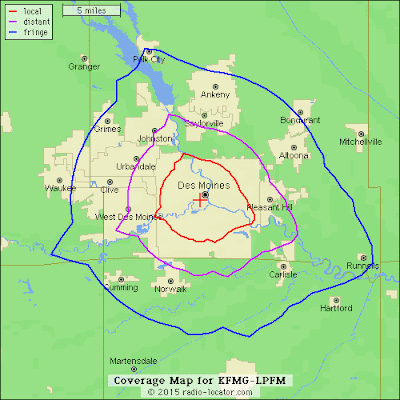Every four years we
hear a lot about the State of Iowa when presidential candidates campaign across
the state. After the caucus hoopla, there isn’t much about Iowa in the national
news.
That is a shame
because Iowa has many things going for it: a diversified economy based on
agriculture, fast-growing cities, excellent higher education and Made-Rite loose
meat sandwiches. Add to that list, Iowa Public Radio (IPR), an innovative
public media organization that covers a big chunk of the state.
On the right is a
composite of Iowa noncommercial stations that subscribe to Nielsen Audio’s
ratings in four markets.
IPR was created
about 12 years ago when the State forced a shotgun wedding of stations licensed
to the University of Iowa, Iowa State University and Northern Iowa University.
Each university had its own stations and traditions. WOI in Ames was
a heritage ag station. KUNI in Cedar Falls was an aggressive newcomer led by
visionary engineer Doug Vernier. WSUI/KSUI in Iowa City was so sleepy you could
hear the snoring behind the programming. Here is a true fact about WSUI/KSUI: For
the first 30 years they didn’t have on-air pledge drives. They didn’t need to because the university
provided all the dough.
The idea for “Iowa
Public Radio” came from Bill McGinley, then GM of WOI, in 2004. McGinley did
the statewide legwork to satisfy the State’s demand for a merged
operation. He was the leading candidate
to head IPR – some folks called him The Bill Kling of Iowa. But, ironically,
McGinley didn’t get the job.
Over the years
since it was created, IPR has evolved into three discreet program channels: Studio One – dual format news and Triple
A music, IPR News – 24/7 news and
information, and IPR Classical.
However, IPR does
not cover the entire state. It does reach the fast-growing metro areas of Des
Moines, Cedar Rapids, Waterloo-Cedar Falls and the Quad Cities. Missing are two rated metro areas:
Omaha-Council Bluffs and Sioux City.
BEST OF IOWA #1: IPR STUDIO ONE
Studio One has a smart combination of NPR News, two excellent local talk
and interview programs and contemporary music. Studio One benefits from being on two big-signal FM stations: KUNI
and WOI-FM.
BEST OF IOWA #2: University of Northwestern’s CCM
Stations
The University of
Northwestern stations are major players in several upper Midwest states.
Originating from the campus near St. Paul, three Northwestern FMs are the
leading noncommercial broadcasters in Iowa. They don’t act like a K-LOVE chain store, each station has its
own personalities, promotions and audience footprint. The university and its
media program began in the 1950s with Billy Graham.
BEST OF IOWA #3: KFMG, DES
MOINES
Though they don’t
subscribe to Nielsen estimates, KFMG [link] has a substantial following in Des
Moines.
The 95-watt LPFM is creation of Ron Sorenson, a legendary Des Moines
broadcaster who has been promoting “music discovery” in the market back in the
early 1970s.
 |
| RON SORENSON |
Sorenson was the
founder of the original KFMG, a commercial progressive rock station with a
national reputation for breaking new artists. In the 1980s KFMG was sold to big
corporate radio.
Rather than play along with the corporate folks,
Sorenson started a new KFMG on a noncom frequency in the early 1990s.
That
station was squeezed off the FM dial by religious broadcasters.
Sorenson and his
associates then pursued the LPFM option. KFMG calls their music format
"Eclectic Triple A” a mix of melodic rock, jazz, soul and reggae.KFMG emphasizes music
by area artists. It is the center of the growing Des Moines arts scene.
KFMG is a small
station that depends on a cadre of well chosen volunteers.
Most importantly, KFMG is sustainable. In 2015 KFMG’s
annual revenue was around $86,000.
FALL 2016 NIELSEN AUDIO
RATINGS: CEDAR RAPIDS & WATERLOO-CEDAR FALLS









No comments:
Post a Comment